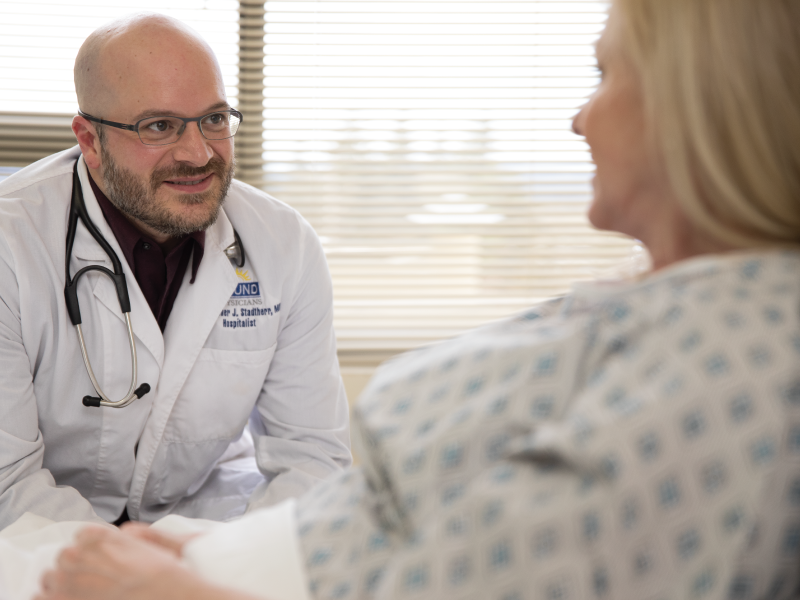August 30, 2017
A Simple Way to Help Providers Improve the Patient Experience

While rounding in the hospital and hoping for a place to sit while speaking with patients, I am often reminded of a classic joke made somewhat famous by Eddie Murphy in the movie Coming to America: A man goes into a restaurant and sits down. He is having a bowl of soup and he says to the waiter: Man: “Waiter, come taste the soup.” Waiter: “Is something wrong with the soup?” Man: “Taste the soup.” Waiter: “Is there something wrong with the soup? Is the soup too hot?” Man: “Will you taste the soup?” Waiter: “What’s wrong, is the soup too cold?” Man: “Will you just taste the soup?!” Waiter: “Alright, I’ll taste the soup – where’s the spoon??” Man: “Aha…Aha!” The problem, of course, is that there is no spoon. Similarly, in hospital rooms across the country, there is simply no place for providers to sit. For years, patient satisfaction experts have rightly touted the benefits of providers taking a seat while communicating with hospitalized patients. Personally, I don’t have to be told twice to sit down. At 6’6”, I feel a mile away from my bed-bound patients and welcome the opportunity to make it a conversation rather than a shouting contest.
The proof is in the data
And for the data-driven, there is powerful evidence supporting this intervention. A 2010 study from The University of Kansas Medical Center showed that when doctors are seated during hospital encounters, patients perceive them as spending 40% more time at the bedside than if they were standing. Most importantly, patients of seated doctors are more satisfied with their care and report a better understanding of their condition. In fact, when doctors sit down, 95% of patients’ post-visit comments are positive. When doctors stand, that number drops to 61%. A more recent study presented this past May at The Society of Hospital Medicine’s HM17 annual conference corroborated some of these findings. When a physician sat down (as opposed to any other healthcare provider), patients were more likely to report that their provider kept them well informed and spent appropriate time with them.
Seeing eye to eye
The New England Journal of Medicine once published a piece called “Seeing Eye to Eye,” by Daniel R. Wolpaw, MD, a member of the faculty at The Case Western Reserve School of Medicine. He wrote about his desire to improve communication with patients by “leveling the topography” and sitting down when talking with them. But he comments on a situation that is largely universal: “…there’s a logistic problem: Where to sit? Many healthcare professionals consider it inappropriate to perch on the edge of the bed — it is the patient’s space, and you never really know what you might be sitting on. Any chairs in the room are generally not well positioned for face-to-face conversation and are frequently occupied by clothing, equipment, or visitors.”
Remember to “taste the soup”
Dr. Wolpaw’s solution came in the form of a portable stool that an intern had witnessed a chaplain using. The next day, armed with a folding canvas camping stool, Dr. Wolpaw began using it on teaching rounds. He comments on the “transformation” of rounds as he witnessed his house staff communicate in comfortable and engaging ways that were clearly the result of being seated and at eye-level with the patients. He ultimately calls for portable stools to be supplied to all medical ward teams for the benefit of both the patient and learner experience. Nurses, physicians and other clinical providers should commit to improving the patient experience by sitting down with their patients at every opportunity. And when hospitals provide designated chairs or stools in patient rooms for providers, it can make a big improvement in the patient’s experience of care. Remember to “taste the soup” and make sure something’s not missing.
